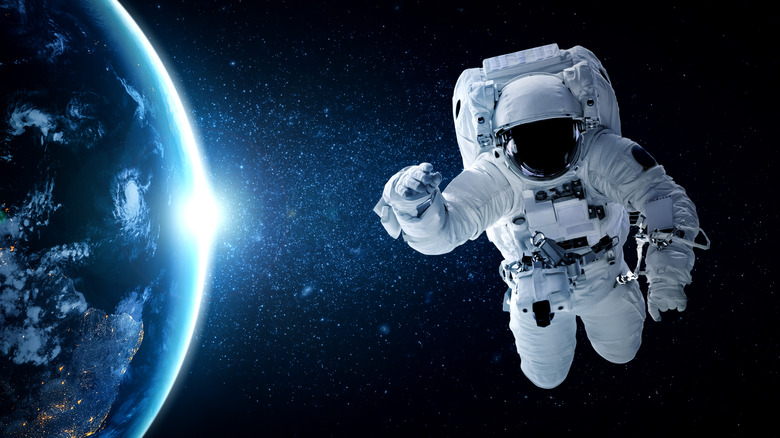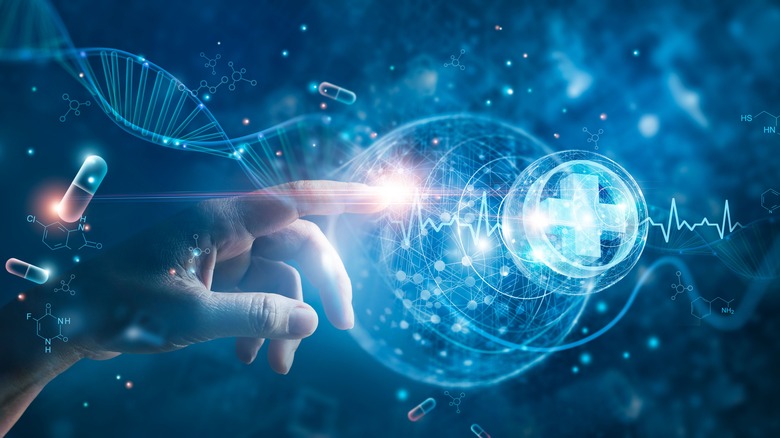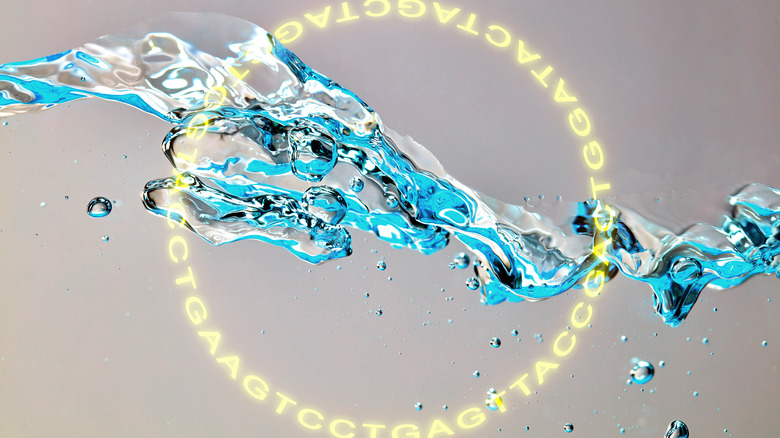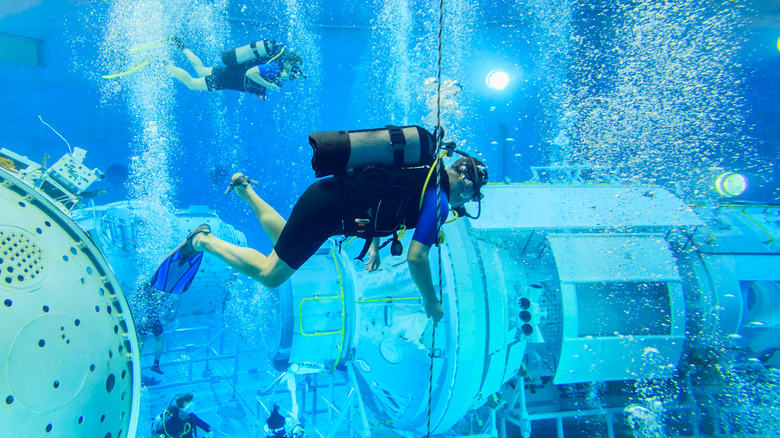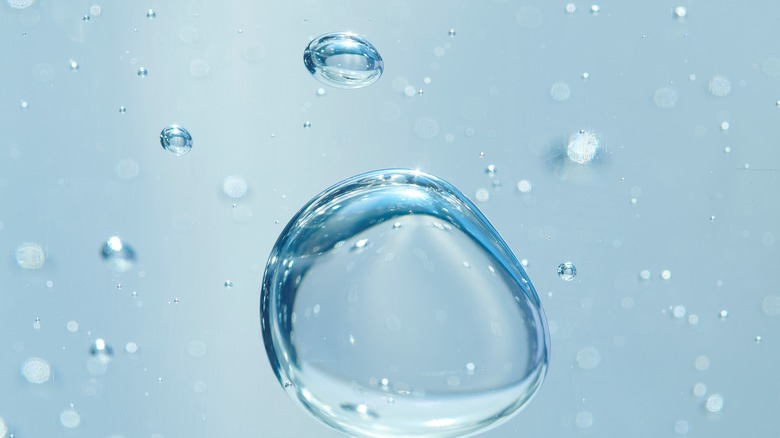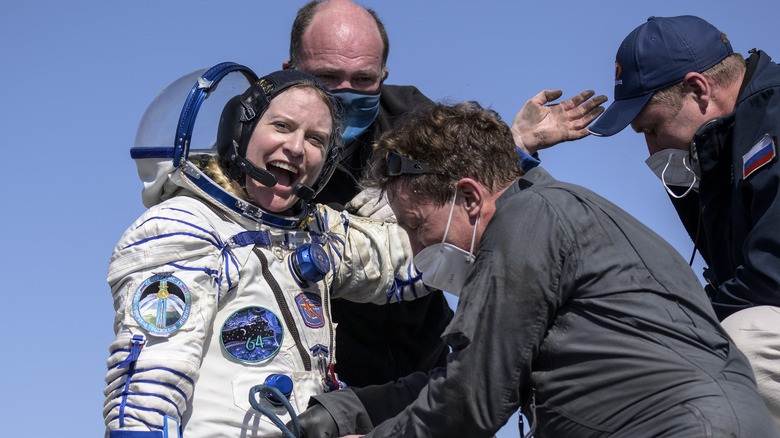How A NASA Astronaut Changed The DNA Game With One Incredible Experiment
Space is often referred to as the final frontier and regarded as a place ripe for exploration. When many of us think of space travel, our minds launch into images of never-before-seen planets swirling through the stardust, of supermassive black holes gaping over endless stretches of the star-swept sky, of flags and plants and starcrafts plunging through the depths of foreign soil, and perhaps even the possibility of encountering alien life. Most of us probably don't imagine a woman in a lab coat conducting DNA sequencing experiments in microgravity. However, according to the latest news from NASA, we probably should.
Enter Kate Rubins, molecular biologist, astronaut, and noted leading lady in STEM, whose contributions to science could change the way we see and study neighboring planets in the future (via Space Center). In 2016, this trailblazer officially became the first person to perform DNA sequencing in an outer space atmosphere. Here's what that means for us on the ground.
The importance of DNA in outer space
We all know DNA is an important part of everyday life. The self-replicating chain of continuous chromosomes is like a guidebook for the body, telling it what to do and how to behave (per Medline Plus). These microscopic double-helix strands store chemical codes for thymine, guanine, adenine, and cytosine, which are often abbreviated by their first letters, "T," "G," "A," and "C." These letters come together in a sequence, which is imperative to healthy cell replication, and to life itself.
According to the National Human Genome Research Institute, DNA sequencing exposes the six-billion or so interconnected "building blocks" that make up the human body. Reading individual strands of DNA can tell you a lot about a person's physical attributes, from the type of earwax they have all the way down to their genetic predisposition to certain diseases and just about everything in between. And if you think that's impressive, imagine the implications of taking the DNA sequencing process a step beyond our world and into the galaxies beyond.
NASA reports that DNA sequencing in outer space could mean a more efficient way of identifying all sorts of things, from illnesses and microbes to potential alien life.
The Biomolecule Sequencer experiment sends earth science into space
For a long time, the prospect of DNA sequencing — particularly the investigation and manipulation of aspects of this discipline — has inspired authors of science fiction. From "X-Men" to "Gattaca," "Jurassic World" to "Star Trek," we've seen sequencing and manipulation emerge in pop culture as a force, a concept, or even an earth-shattering revelation that threatens to take down the entire human race. Yet once again, the truth is more fascinating than its fictional counterparts. NASA reports that DNA sequencing is already blasting into outer space, and their Biomolecule Sequencer experiment presents endless intergalactic possibilities.
According to NASA, a handheld device — aptly titled MinION — might just be the companion astronauts never knew they needed. The goal of the program is to make all the technological elements of DNA sequencing applicable in outer space. Ideally, this would happen via the MinION, a diminutive biomolecule sequencer that sits in the palm of the hand (much like a cell phone) and dials out all the information found in cells. While orbiting in microgravity via the hovering International Space Station, astronaut and molecular biologist Kate Rubins successfully completed DNA sequencing through the MinION for the very first time in history (per Space Center). The rigorous experiment required DNA samples to be tested on Earth and in the space station, with the hopes of yielding identical results in both locations.
Testing by land, space, and sea
The Biomolecule Sequencer investigation took place in low orbit aboard the roving International Space station (via NASA). It consisted of DNA samples from bacteria, a mouse, and a virus. The results collected by the MinION were compared to the results collected by researchers on land and appear to have yielded identical results, making the mission a success. However, this was not the only test carried out to determine whether DNA sequencing is possible in a microgravity environment. Another mission, carried out in an underwater facility known as the Aquarius Base, was also used for this purpose (per Phys.org).
That test, entitled NEEMO, was regarded as a huge success. NEEMO (short for NASA Extreme Environment Mission Operation) was a separate DNA sequencing operation conducted by real-life aquanauts in an underwater research facility located off the coast of Florida. "The NEEMO tests went smoothly," proclaimed NASA microbiologist Sarah Castro-Wallace, who expressed a great deal of confidence in the program (per NASA).
Hiccups, or rather bubbles, could present potential problems
Of all the things in the world and beyond to have to worry about, bubbles are among the most troublesome for DNA sequencers in space environments, according to NASA. That's because once gravity is removed, air bubbles just float around haphazardly in liquid (unlike what happens on earth, where they always rise to the top). NASA planetary scientist Aaron Burton explained that unpredictable air bubbles could block the nanopores in the MinION machine, causing inaccurate readings. Similarly, zero gravity medical technicians also express concerns regarding bubbles behaving strangely in fluid-filled tubes at zero gravity (per Wired).
While bubbles clogging nanotubes and rendering MinION readings useless is one potential threat, experts point to the unknown as the biggest obstacle beyond the horizon. "A lot of the things that might introduce errors are simply unknown at this point," explained Sarah Castro-Wallace. Given the fact that at least 96% of the universe is completely unknown to us at this point (via Space), problems big enough to burst our bubbles are bound to arise.
The implications of DNA sequencing in space are literally astronomical
When Kate Rubins (pictured above left) set out to perform DNA sequencing in space, her aspirations were quite literally astronomical. NASA reports that, thus far, astronauts have been unable to successfully examine and/or create known DNA sequences in microgravity and other harsh environments. According to GeekWire, if they are able to complete the entire process in outer space, they can use it to examine potentially identify harmful pathogens onboard and scan for space mold, which is a real thing. They might also use the tech to study changes in gene expression that happen during space travel (such changes currently pose serious threats to astronauts' immune systems).
As is the nature of space exploration, what lies ahead is the great unknown, a journey that is nearly impossible to prepare for. As investigations in DNA sequencing probe forth, the next mission is to efficiently extract, prepare, and sequence DNA in space. Will this lead to the identification of space-born illnesses or alien life forms? Only time will tell.
